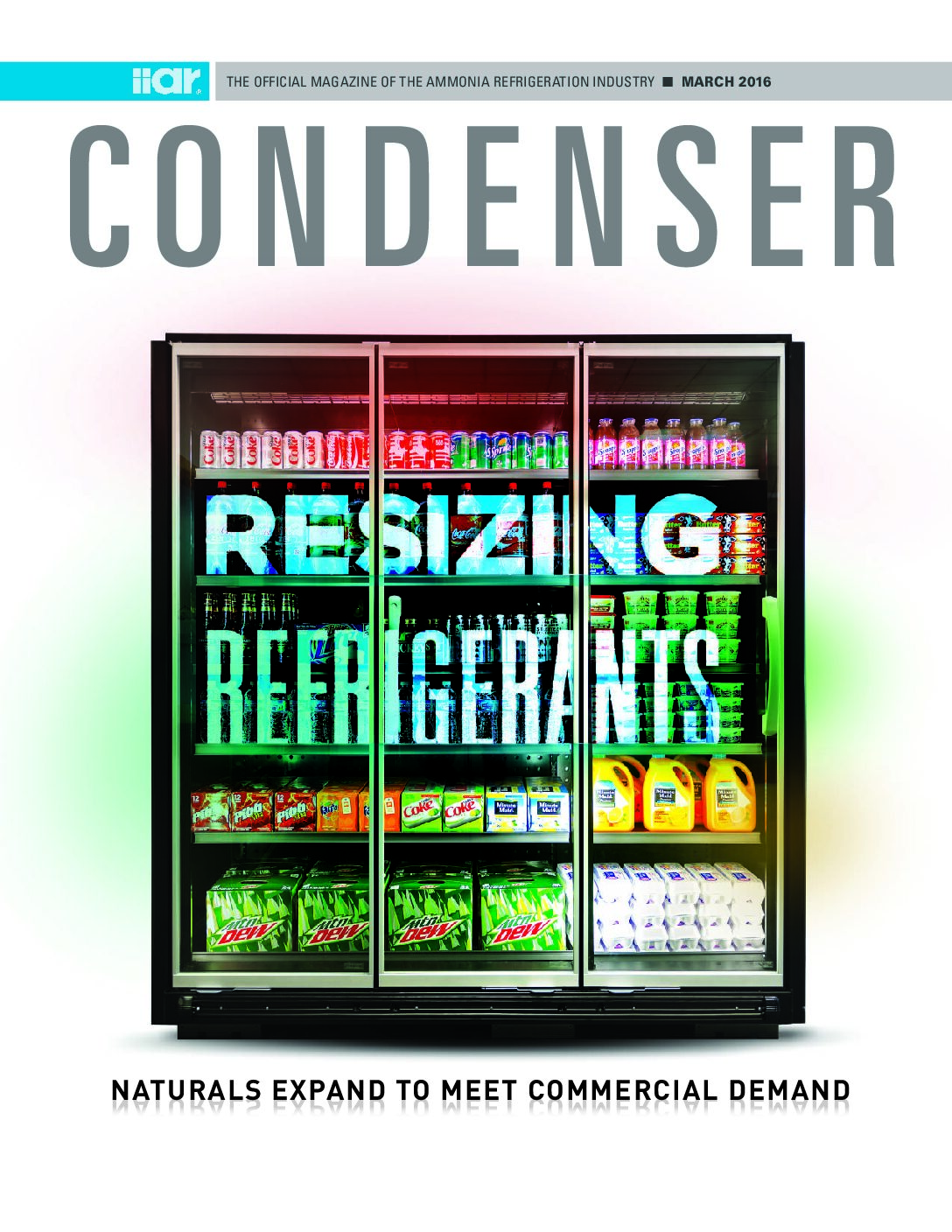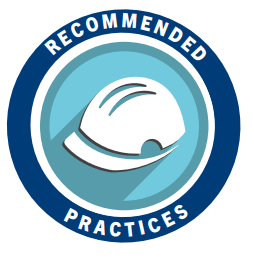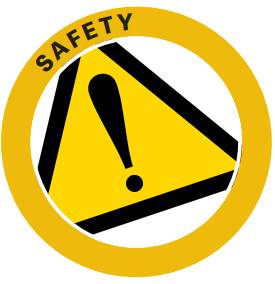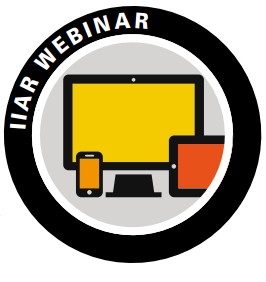Chairman’s Message
It’s time again for IIAR’s Conference and Exhibition, and that means my term as Chairman is almost over.
Read More
MARCH 2016 CONDENSER
Condenser issues are available as a PDF downloads for both IIAR Members and Non-members, or as individual article posts below. Click the button below to view the full issue, or scroll through all the individual issue articles below.
It’s time again for IIAR’s Conference and Exhibition, and that means my term as Chairman is almost over.
Read MoreThe 2015 – 2016 membership year has been an exciting time for our industry. As regulations and technologies evolve at a rapid pace, we’re seeing new opportunities and applications for refrigeration grow like never before.
Read MoreDuring a recent high school fundraising dinner in my small town of Azle, Texas, I looked around in amazement at the nearly 200 people who came out to support this event.
Read MoreAs hedrofluorocarbons and hydrochlorofluorocarbons are being increasingly phased out to meet government and regulatory requirements, natural refrigerants are candidates to fill the void, getting a closer look from many types of businesses installing smaller refrigeration systems, such as supermarkets and convenience stores.
Read MoreThe annual conference is an exciting time for all sectors of our industry to come together and catch up with friends and business partners at one of the largest conference and expo events dedicated to the use of natural refrigerants.
Read MoreThe International Institute of Ammonia Refrigeration 2016 annual conference in Orlando, Florida, will provide three days of technical knowledge, networking and industry-sponsored events for those involved in the ammonia refrigeration industry
Read MoreDuring the annual IIAR Conference technical program, a number of presenters will discuss their findings from peer reviewed technical papers. Topics range from global refrigerant trends to determining the effectiveness of vapor retarders on insulation systems.
Read MoreIAR is moving forward on its recognized and generally accepted good engineering practice (RAGAGEP) standard for existing facilities, which is intended to provide guidance for end users and compare their older designs to the new and updated safety standards.
Read MoreThe North American Sustainable Refrigeration Council — a newly formed 501(c)(3) nonprofit organization — is working to advance natural refrigerants such as ammonia or carbon dioxide and create a more sustainable future for supermarket refrigeration.
Read More
The regulatory burden on synthetic refrigerants is much stiffer than it ever has been before, which is opening more opportunities for natural refrigerants in the U.S. Lowell Randel, vice president, government and legal affairs for the Global Cold Chain Alliance, said a number of factors are contributing to the growth of natural refrigerants, including the Significant New Alternatives Policy (SNAP) Program, which is authorized under the Clean Air Act and administered by U.S.
Read MoreBob Appleton never flaunted his expertise in the ammonia refrigeration industry, but those who worked with him during his five-decade career knew that he was the man to see whenever they had a riddle they could not solve.
Read MoreIn an industry that relies on complex data, Bob Armstrong packaged technical information with an inventive elegance and a critical eye as the driving force behind the International Institute of Ammonia Refrigeration’s annual conference for many years and the first editor of the Condenser magazine.
Read More
Thermosyphon systems have a solid reputation in the industrial refrigeration industry, and are a popular choice for many . . . as long as they work. But when a thermosyphon system has problems, those problems are sometimes not easy to identify or correct. Gary Gneiting, director of engineering at Mericle Mechanical, Inc., said a vortex could be one reason at the bottom of a poorly performing system
Read More
The ammonia refrigeration industry has long understood that the most critical time during a potential ammonia emergency is the first 30 minutes. The quickness and effectiveness of first responders can mean the difference between a minor, manageable incident, and a chaotic catastrophe.
Read More
The lessons we learn come from many placLESSON es, some from experiences within our work environment and many outside of that environment. Consider this question, “Are you or a co-worker properly prepared to safely perform your assigned responsibilities?” “Have your past training and experiences formed a solid base that will help you complete your activity not only safely, but in an effective and efficient manner?”
Read More
In February 2016, the Occupational Safety and Health Administration (OSHA) announced that it is initiating a Small Business Advocacy Review (SBAR) Panel in order to get feedback on several potential revisions to OSHA’s Process Safety Management Program (PSM) standard.
Read More
Noncondensable gases in industrial refrigeration systems are common, and although it may take years for those gases to accumulate, they must be addressed. If not, the steady accumulation can become problematic and have an adverse effect on systems.
Read More
For owners of a cold storage warehouse or food processing facility, selecting the right air cooler can significantly affect energy consumption. Purchasing properly-sized, efficient evaporators to produce maximum capacity with minimal fan power can mean the difference between energy overages and energy savings.
Read More